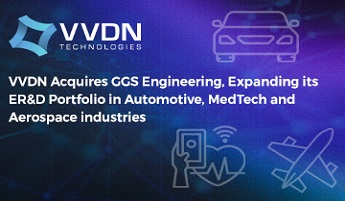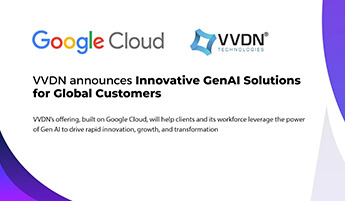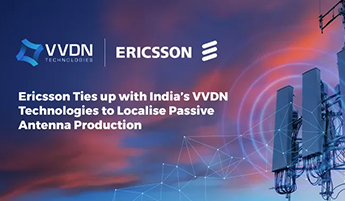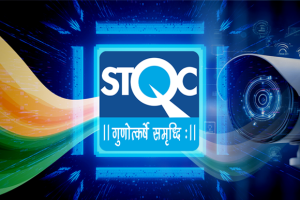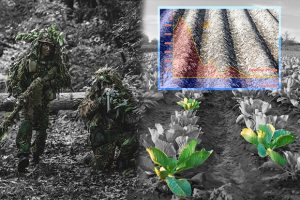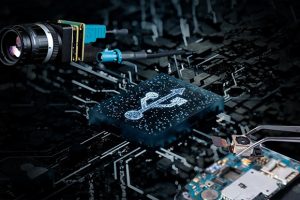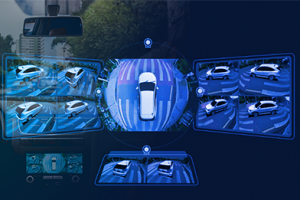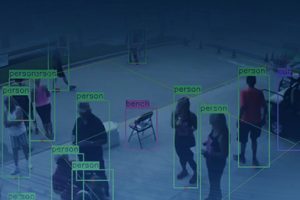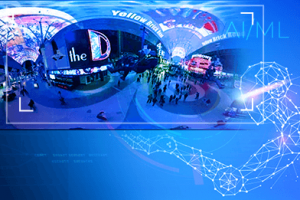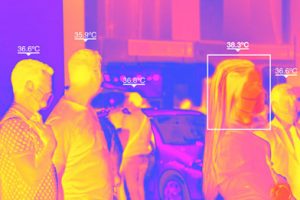The evolution of IP cameras has moved far beyond simple surveillance. Today’s smart cameras act as edge computing devices, capable of real-time analytics, remote management, and seamless cloud integration. For product OEMs and solution providers, building a camera is no longer just about image quality — it’s about designing a complete, end-to-end system that spans hardware, firmware, connectivity, AI, and cloud platforms.
In this blog, we’ll walk through each critical layer of a full-stack IP camera solution — hardware, firmware, middleware, connectivity, and cloud — and explain how VVDN enables OEMs to design, develop, and manufacture high-quality, production-ready cameras tailored to specific market needs.
At VVDN Technologies, we specialize in delivering full-stack IP camera solutions — from lens to cloud — helping our customers accelerate time-to-market while ensuring reliability, performance, and customization at every stage.
Table of Contents
The Full-Stack IP Camera – What Does It Mean?
A “full-stack” IP camera solution involves the integration of all functional layers:
- Hardware: Sensor, lens, SoC, power, thermal and mechanical
- Firmware: OS/BSP, drivers, bootloader, camera pipeline
- Middleware: Video encoding, AI inference, storage handling
- Connectivity: Wired (Ethernet/PoE) and wireless (Wi-Fi/LTE/5G)
- Cloud: Streaming, alerts, remote configuration, storage, analytics
When all these layers are designed to work in sync, the result is a robust, intelligent, and highly customizable camera solution — optimized for a variety of industries like smart cities, security, industrial IoT, and transportation.
Hardware: The Eye and Brain of the System
The foundation of any IP camera starts with its optics and core electronics. VVDN’s engineering team helps customers make the right choices based on the intended use case:
Image Sensor & Lens
- Sensor Type: CMOS sensors like Sony STARVIS, Omnivision, and OnSemi for excellent low-light performance.
- Lens Selection: Depends on required FoV, IR support, distortion, and mounting standard (M12, CS-mount).
SoC Selection
- High-performance SoCs from Qualcomm, NXP, Ambarella, and also Novatek, Innofusion, and Texas Instruments (TI) are supported to meet diverse AI and image processing needs.
- Built-in ISPs handle color correction, HDR, and noise reduction.
- AI acceleration through NPU/DSPs enables real-time analytics at the edge.
PCB & Signal Design
- VVDN supports complex multilayer HDI PCBs (up to 12L, 16L) to meet high-speed signal and power integrity requirements.
- Signal Integrity analysis, EMI/EMC compliant designs, and safeguards for ESD, EFT, Surge are incorporated during board design to ensure robustness in industrial environments.
Thermal & Mechanical Design
- Robust enclosure design for indoor, outdoor, and industrial cameras ensuring heat dissipation, IP rating, and tamper resistance.
- In-house Industrial Design (ID) and mechanical CAD expertise.
- Modular housing options to support multiple lens configurations (e.g., dual lens setups).
- Thermal and structural simulations for optimized performance.
- Rapid prototyping and functional testing for faster iterations.
- In-house mold tooling capability for efficient and scalable manufacturing.
Camera Form Factors
VVDN supports a wide variety of enclosures and mechanical configurations: Dome, Bullet, Box, PTZ, Wedge, and custom plastic/metal housings—each tailored for specific applications and deployment environments.
Firmware & Software Stack
VVDN’s camera firmware stack is designed for real-time performance, scalability, and OTA support:
BSP & OS Layer
- Linux or RTOS, customized for boot speed, power efficiency, and stability.
- Camera pipeline integration via GStreamer, V4L2, or custom APIs.
Video Encoding & Streaming
- Real-time encoding using H.264/H.265, motion detection, time-based recording.
- Streaming protocols like RTSP, ONVIF, and WebRTC ensure integration with any VMS or cloud.
AI & Analytics (Optional)
On-device inference using SSD, YOLO, or custom DNN models for:
- Human/vehicle detection
- Face recognition
- License plate recognition (ANPR)
- Behavioral analytics (loitering, fall detection, crowding)
Connectivity: Real-Time, Everywhere
An IP camera’s performance is only as good as its ability to stay connected, regardless of its environment:
- Ethernet (with PoE) for uninterrupted high-bandwidth connection in fixed installations.
- Wi-Fi 5/6 for indoor or semi-outdoor deployments with router access.
- 4G/5G LTE modules for remote or mobile setups like construction sites or moving vehicles.
- Optional dual connectivity (Ethernet + LTE) with fallback logic.
- VVDN also offers custom antenna tuning and certification support for wireless designs.
Cloud Integration: Control, View, Analyze
The final and most visible layer is cloud connectivity — where end-users interact with the camera:
Features:
- Remote live streaming
- Event-based alerts & push notifications
- Cloud storage and playback
- Device provisioning and health monitoring
- Analytics dashboards with heatmaps, occupancy, and object tracking
Cloud Hosting Options:
- Public platforms (AWS, Azure, GCP)
- VVDN’s custom white-label cloud platform – ICE
- Hybrid models for edge + cloud analytics
- Integration with third-party VMS platforms and smart home ecosystems
VVDN Advantage: A True End-to-End Partner
What sets VVDN apart is our end-to-end capability under one roof:
- Hardware Design: SoC and sensor integration, signal integrity, PCB layout, thermal and mechanical engineering
- Firmware & AI: BSP development, camera SDK, edge AI model integration
- Compliance-Ready Designs: STQC, ESD, EMC, surge, and safety compliance built into every design
- Connectivity: PoE, LTE, certified Wi-Fi, and custom antenna solutions
- Manufacturing: Camera line setup, calibration, burn-in testing
- Cloud & App: Web/mobile viewer, analytics dashboards, API integration
Whether it’s a smart doorbell, traffic surveillance camera, or a rugged industrial vision system, VVDN offers end-to-end expertise—from technology stack to production-ready manufacturing.
Conclusion: Building Smarter Cameras Starts with a Smarter Stack
As vision-based products become more intelligent and interconnected, OEMs need partners that go beyond modules or reference designs. A successful IP camera is one that performs reliably in the field, processes data intelligently at the edge, and provides a seamless experience on the cloud.
At VVDN, we help customers design and build such solutions — from lens to cloud.
Want to build your next smart camera? Let’s talk.

